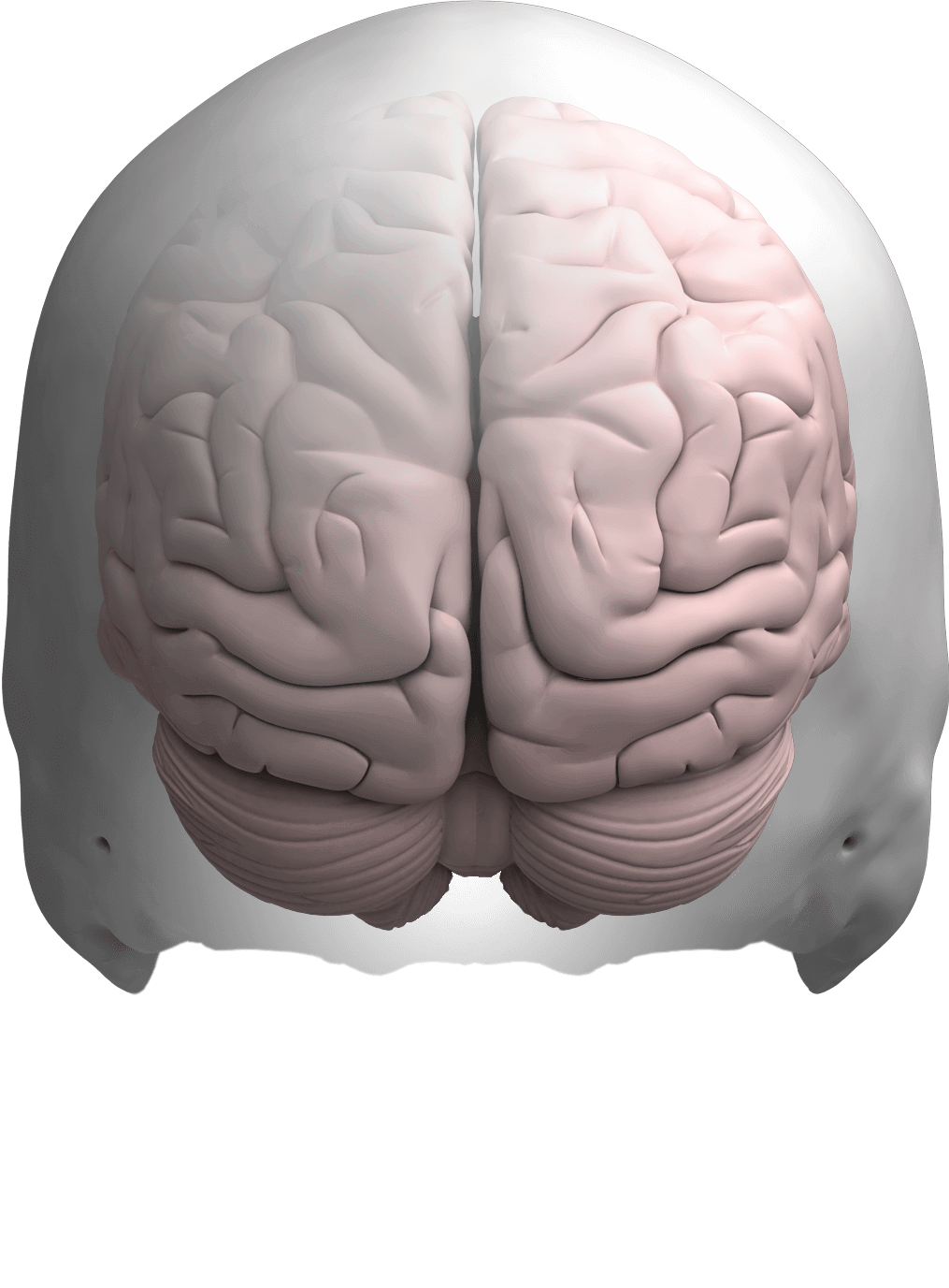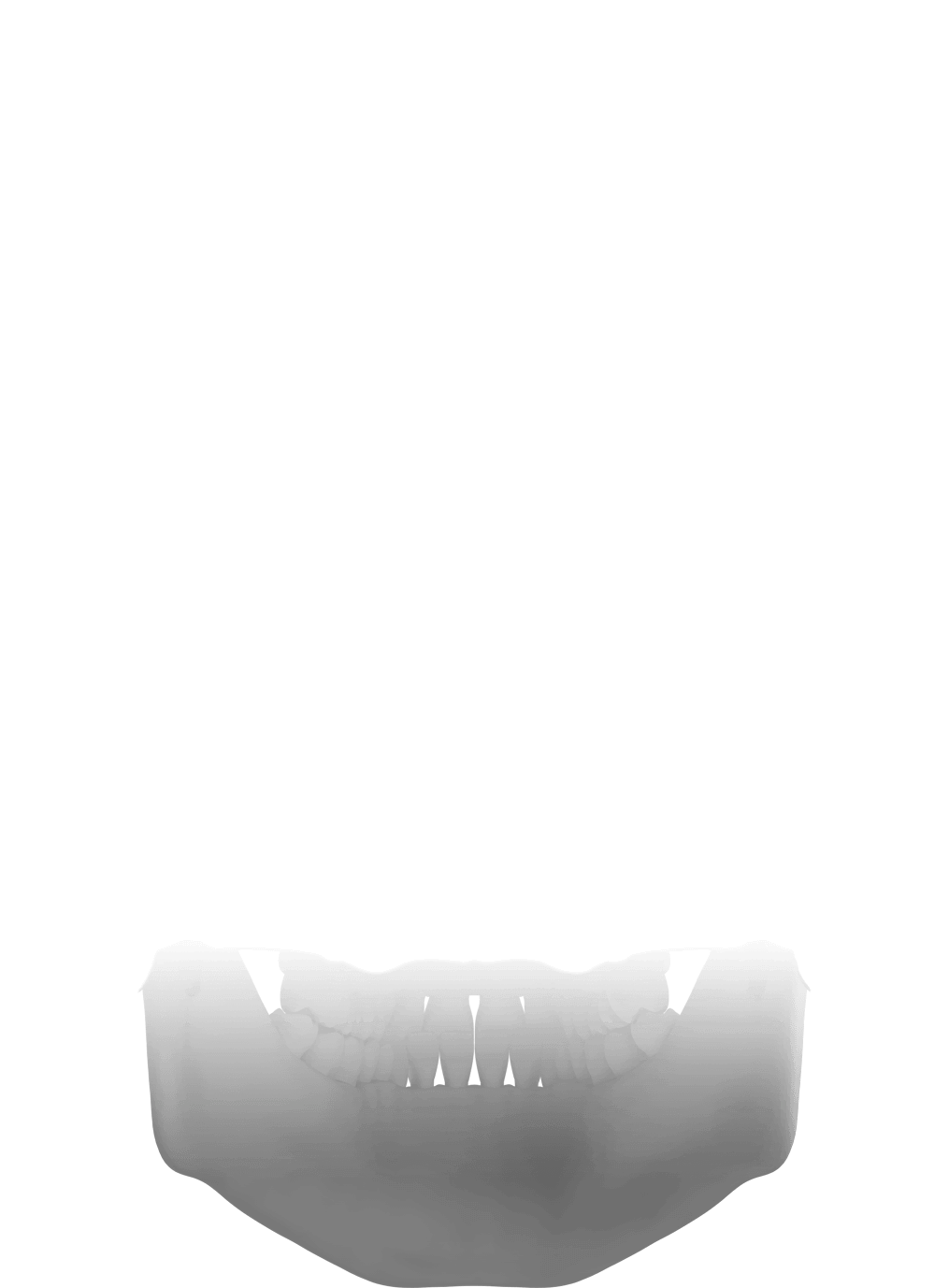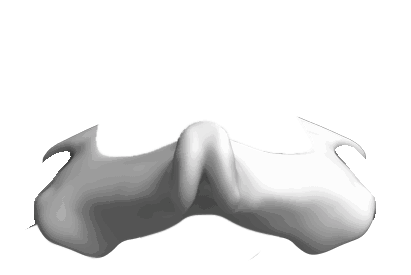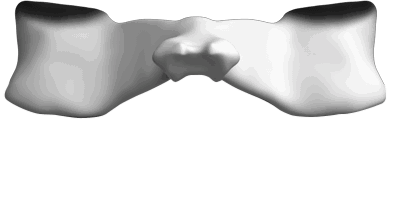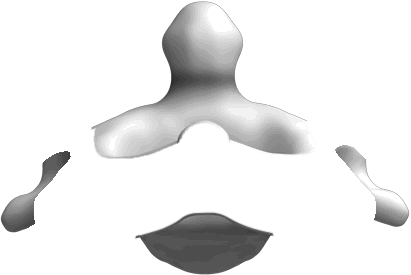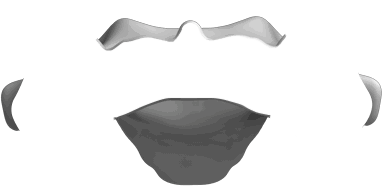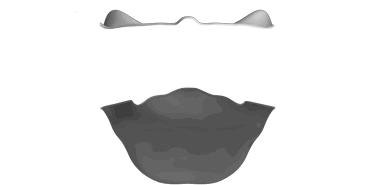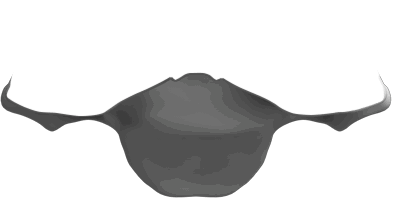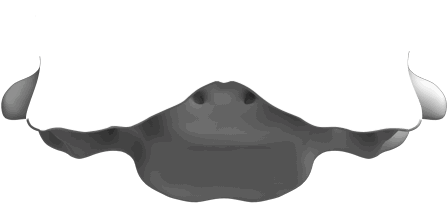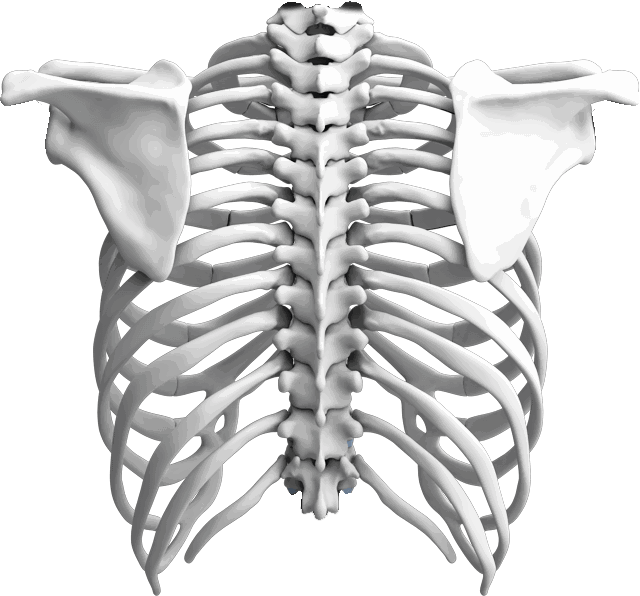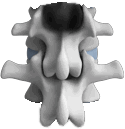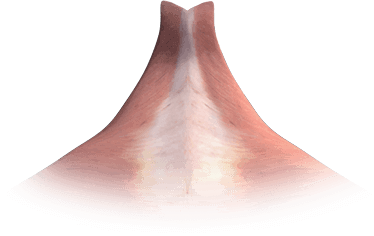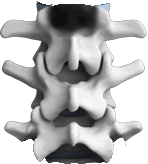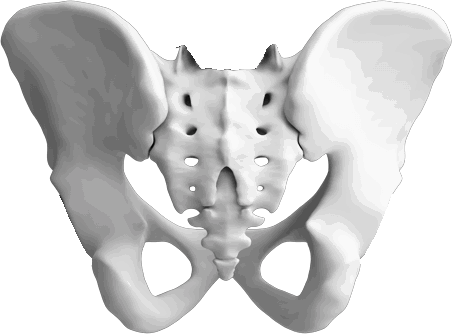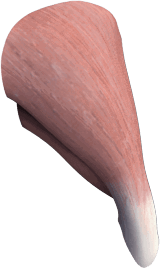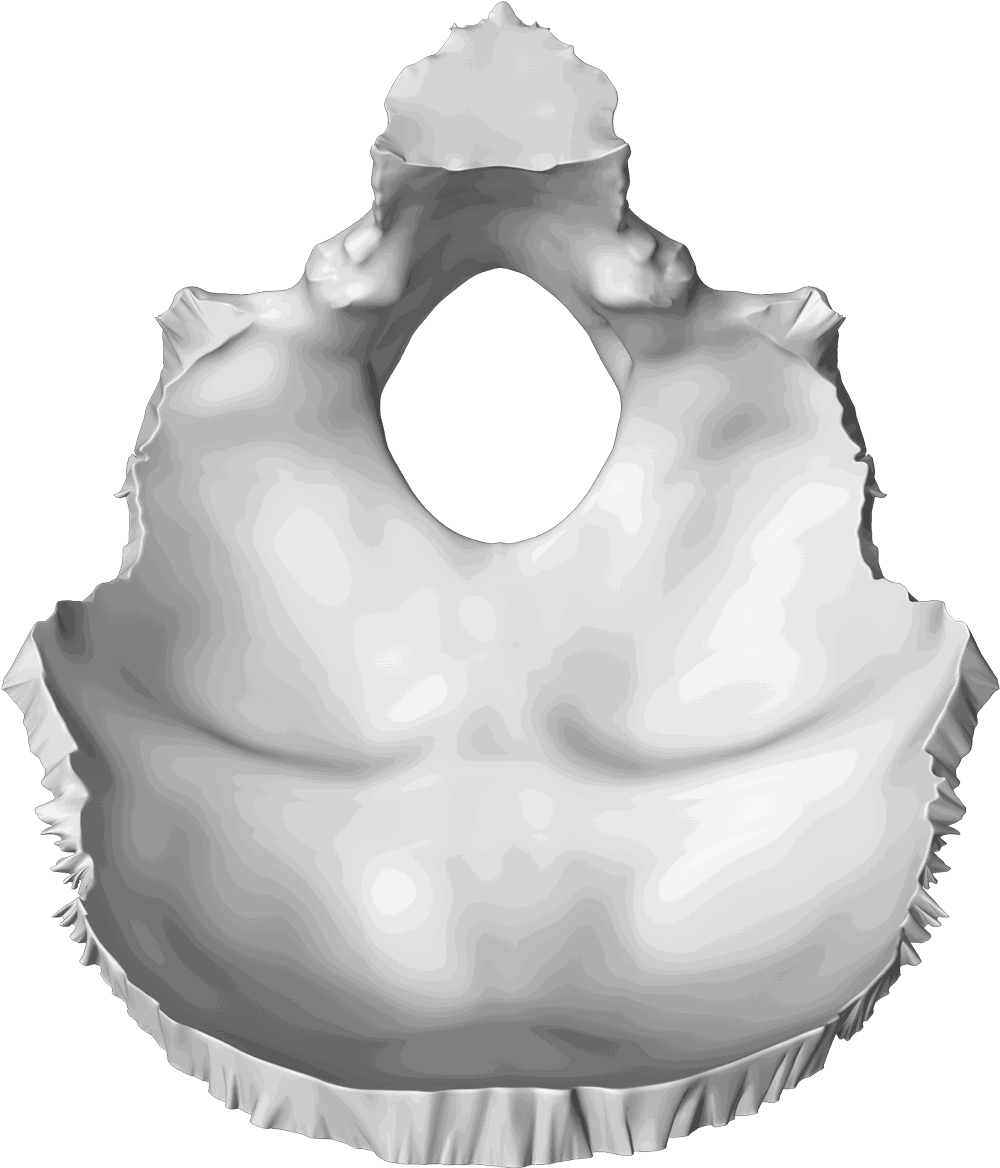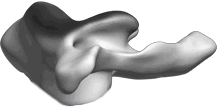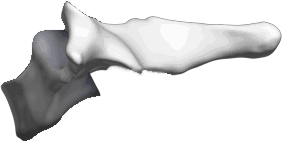Learn about our 95% Success Rate!
The Head-Neck boundary is known as the Craniocervical Junction
The most complex and impactful region of the human spine is also the most fragile. It must be mobile, without compromising stability.
Most of our everyday head movements occur between the head and top two bones of the neck. The atlas and the axis allow us to look up, down, left and right. It’s like a swivel joint, and when injured or severely stressed, this area can buckle and kink adversely effecting the brainstem, spinal cord, blood vessels and the flow of spinal fluid. The important control centers which control and regulate many body functions can become disrupted when this area is misaligned. Specifically, a subluxation or misalignment in this area can cause these, and many other symptoms:
- Sleep Apnea (Obstructive and Central, or Mixed)
- Swallowing issues, Choking and Reflux
- Migraines, Headaches and Skull pain
- Jaw Pain, with or without popping and clicking
- Face Pain, Ear Pain, Jaw Pain
- Ringing in the Ears, Hearing Problems
- Brain Fog and Mental Focus
- Sinus Pain and Inflammation
- Vertigo and Dizziness
- Heart Palpitations, SA Node disturbances
- High Blood Pressure
- Difficulty Breathing or taking in a full breath
- Forward Head Posture, low shoulder or short leg
- Anxiety, Bursts of Anger, Attention Problems
While this is not a complete list, and a problem in the head-neck junction is not the only cause of these symptoms, we invite you to schedule a complimentary and comprehensive consultation. This is an important area of your body that we understand, and know how to correct and manage without manipulations or incisive surgery. On your visit with us, we take upright 3D images of your head and upper neck which enable us to identify, or rule out the type of problem we specialize in correcting. If you have a problem here, we can diagnose you and provide a safe and proven affective treatment.
Diagnosing this Area and a Gentle Solution
Utilizing a very precise system of analysis, we are able to either identify, or rule out this problem. If the diagnosis is positive, meaning this atlas and axis are found to be twisted and misaligned, we are able correct the misalignment using a robotic armed instrument designed to deliver the exact angle of impulse into the atlas vertebrae, gently bringing the head, upper neck and jaw joints back into proper alignment without harming any of the vital tissues that encase these structures. This procedure is called TAP, or Transdermal Atlas Positioning.
The TAP procedure is part of the Atlas Aligning Therapy that is foundational to correcting symptoms. (The TAP Vector is represented by the correction arrow shown positioning the atlas vertebrae back into position under the skull when you click on the animated illustration to the right). The TAP is the most safe and effective method of repositioning the head-neck junction. The TAP procedure is performed using the Sweat Instrument, which deploys a robotic arm to deliver a directional impulse so precise that it will position the upper two neck bones back under the skull without braking the skin, or without “twisting” or “popping” of the upper neck joints.
So gentle and precise is the TAP procedure, that most patients don’t even feel the procedure being performed. However, the positive impact is usually felt immediately as the central nervous system begins to open a restricted airway, re-regulate heart function and allow spinal fluid to flow freely to and from the brain while breathing. The Fight or Flight or Freeze mechanisms are down-regulated, and a serene peace enters the body and mind as the body returns to a “normal status”.
Immediately following the TAP procedure, 3D images are repeated to verify a successful procedure. Once confirmed, post TAP recovery is provided in special antigravity, recumbent stations with minimal sensory input as the body’s cardiopulmonary, digestive and autonomic systems regulate, integrate and return to normal. Pain leaves the body, and vitality begins to flow freely through the body. The healing process has begun.
The Lasting Difference by Avoiding Relapse
An upper cervical misalignment is known in the medical literature as an Atlas Subluxation. When symptoms arise from an atlas subluxation, the cluster of symptoms are called an atlas subluxation complex. A “luxation” refers to a displacement or derangement that is not as extreme as a dislocation, but still presents clinical symptoms and signs. Special images on precisely designed x-ray systems allows detection of the atlas subluxation. I have had discussions about this specific region with neurosurgical colleagues, and I have learned from them that this area cannot be aligned through surgical means, it can only be decompressed and/or fixated.
The TAP procedure is a technique that can be performed without damaging any tissues. Trauma of any kind activates the sympathetic nervous system, deploys natural defense mechanisms and inflammation and prevents the return to a normal, balanced status of this region. When the proper correction to this area is achieved, the results can be simply life changing. While patients notice immediate changes throughout their entire body, as normal alignment and posture is restored to the head-neck junction, relapse can be a real thing for some as their body starts to experience some degree of re-onset of symptoms days or weeks after the initial TAP procedure.
While Relapse usually does not involve the same severity or frequency of symptoms, it can be a let down for patients who experience total symptom resolution only to have the symptoms start to creep back in as time goes by. We have created a high impact solution to the problem of relapse, and pioneered non-fixating methods of stabilizing the head, neck and jaw area to prevent its relapse. We do this without surgical fixation plates or screws, or complex rehab programs. We gain retention through our proprietary oral orthotic system–a first of its kind–designed to maintain the alignment of the head, upper neck and jaw joints, and re-train the myriad of muscles, nerves and fascia of the head, upper neck and jaw to stabilize and heal with minimal to no relapse.
We call this initial phase of treatment ALIGN, because true healing begins with a restoration of communication between the brain and the body systems, without relapse. This is where your healing journey begins.
We encourage you not to wait. We are here to help and have designed an effective diagnostic visit for our prospective patients that includes ample face-to-face time with the doctor, 3D imaging, interpretation of findings and a treatment plan if a positive diagnosis is attained.
Learn More About TAP Benefits…
The connection between the brain and the body are inseparable. In form and in function, in sickness or wellness. The Brain-Body Connection occurs at the head and neck in a region known as the Cranio-Cervical Junction (CCJ). Our overall health depends on the quality of this connection. All vital functions, spinal fluid, nerve signals, blood flow and nutrients to the brain pass through this tight corridor called the CCJ. The Gut-Brain junction occurs here, at the CCJ.
Modern advances in medical science can keep the body alive without the brain, but our brains cannot live without our bodies. When our heart, or lungs shut down, or the vital flow of oxygen is blocked from our brain, and carbon dioxide is trapped inside the brain tissues, intact brain cells rapidly breakdown, the cell wall is compromised, and the microscopic organs within the cells malfunction and disintegrate, and the cell rapidly dies. If enough of these cells die, then life in the organism as a whole is not sustainable. The brain dies. Those dead brain cells cannot be resuscitated. Known science does not permit a Lazarus event in those dead cells.
Our entire life experience depends on the quality of communication between the brain and our body.. the quality of this communication determines our quality of life. Cognitive Scientist Guy Claxton observes, that cognitive processes are not separate from senses and motor functions. As Claxton puts it, “the body, the gut, the senses, the immune system, the lymphatic system, are so instantaneously and so complicatedly interacting with the brain that you can’t draw a line across the neck and say ‘above the line it’s smart and below the line it’s menial.’” And yet, with advanced imaging and analysis, when we actually “draw that line” at this boundary, then measure the alignment of those functional spaces inside this vital corridor, we often discover displacements, distortions and malalignments that are directly linked with body-brain disconnect and disease in our sick patients. Conversely, in our formerly sick patients, we see a restored alignment of this functional channel known as the CCJ.
After years of caring for patients and looking at thousands of images of the CCJ, I am fully convinced that impedance and restrictions of flow along the vital corridor passing from the brain to the body literally makes all the difference on the life-spectrum which has vitality at one end, and tombstone on the other. As the CCJ breaks down and distorts, our flow ebbs, our sizzle fizzles… and we lose power and life-force. Nutrients are not delivered. Used metabolites are not cleared from the brain tissues. Misalignment robs us of our life-force gradually, we are not fully functional, because our form has broken down. We are not fully alive, but rather, in the words of Billy Crystal’s character in The Princess Bride, we are “Mostly Dead”
When the body is aligned with the head, the complex linkage between our body and brain is open and optimized, and normal function is restored throughout the body and brain. The two do not function independently. The first stage of healing is to restore this anatomical connection between the brain and the body. That’s what ALIGN is all about. (Click on the image to the right to get an idea of what ALIGN looks like!)
“Aligning the corridor between the brain and body opens up vital flow channels, bringing clarity, balance and function”
How Did I Get This Way?
How we end up in this position can often be quite complex. Traumatic causes from sports injuries, car crashes and falls appear obvious. however, misalignments from dental procedures like ortho, extractions or imbalanced bite posture can produce significant neuromuscular compensations to pull the craniocervical junction out of alignment as well. Who would have thought? Research shows strong correlations between spinal conditions caused by dentofacial procedures and malocclusions.
As you can see here, injury also twists the upper neck adding to the complexity of the misalignment and compounding stress to the brainstem. The misalignment you see is the result of one or more past injuries. Injuries can often be traced all the way back to childhood: The header off the top bunk, a tumble down the steps, the fall off the bike, hayloft, or backyard tree. Or perhaps it was that teenage gymnastics injury or auto accident? Think back and you’ll probably come up with a few possibilities of your own.
Regardless of the cause, ninety-five out of a hundred people are left with neck misalignment and posture distortion by the time they reach adulthood. After the initial pain of an injury subsides, upper neck misalignment can remain pain-free for years until a more recent injury occurs or body imbalance finally takes its toll in the form of degenerative disc disease, arthritis and/or stenosis. See “How Does This Affect My Health”.
The Nervous System "Grand Central"
The lower end of the brain is called the brainstem because it descends down into the upper neck. Every nerve that travels down the spinal cord has to pass through the fragile donut shaped vertebra that wraps around the brainstem called the atlas! Other important nerves like our vagas nerves which provides parasympathetic tone to most all of our organs below passes just in front of the atlas and can be pinched when the atlas is twisted! For this reason, the upper neck is our neurological “Grand Central Station”! Here’s why:
Posture And Body Balance
The lower brainstem controls posture and balance. Misalignment and stress in the upper neck interferes with the nerve tracts and causes the muscles along each side of the spine to pull unevenly and shift the entire body off center. (See “The Bigger Picture” to learn how stress on these posture control centers affect the entire body.
Blood Pressure, Respiration and Heart Rate
The neurological centers for control of these body functions are located in the lower brain stem and can be adversely affected by upper neck misalignment. Recent research has proven the Atlas Orthogonal correction helps people with high blood pressure. (Google “Atlas Orthogonal” and “blood pressure” to view the results of this research.
Sleep / Mood
Serotonin is a chemical produced in the lower brain stem. Serotonin influences various functions, including regulation of mood, sleep, appetite, muscle contraction, and some cognitive functions including memory and learning. Upper neck misalignment causing stress on the lower brain stem can have a dramatic affect on a person’s energy and overall sense of “aliveness” as is the case with Chronic Fatigue Syndrome and Fibromyalgia.
Immune Function
The Autonomic Nervous System controls all of the body functions that we don’t have to think about. The Sympathetic Nervous System is that part of our Autonomic Nervous System that becomes more active during times of stress and is often called the fight-or-flight response. Upper neck misalignment creates long-term activation of the Sympathetic Nervous System which is proven to suppress the body’s Immune System.
Digestion
The Vagus nerve is very influential in regulating digestion and elimination. This important nerve is often affected by misalignment of the upper neck because it passes right next to the atlas vertebra as it comes down from the brain.
Head and Facial Problems
Cranial Nerve dysfunction can result in problems such as Trigeminal Neuralgia, Bells Palsy, Meniere’s Disease, Sinus Problems, Headaches, Ear Pressure, Dizziness, etc. Patients with these problems often respond to the Atlas Orthogonal correction since cranial nerves have tracts that descend into the upper neck. Most recent research is beginning to show how upper neck misalignment impedes cerebral spinal fluid flow and blood flow in and out of the brain!
The Bigger Picture
Injury to the upper neck has a global affect on the body. When the head shifts off the top of the neck due to injury, the body’s “righting reflex” moves the body into a distorted posture to bring the head back to level. This shift causes stress and miscommunication affecting posture control centers in the lower brainstem where it passes through the top vertebra. Posture muscles that run along one side of the spine pull harder than muscles on the other side resulting in the picture you see here.
Body imbalance has a very negative long-term effect on spinal discs. When the body’s weight is not distributed evenly across the discs, premature degenerative disc disease, herniation and even a closing down of spinal nerve canals (stenosis) can result. Just as driving your car with the front end out of align causes premature tire wear, long term body imbalance causes your spine to age quicker. The difference between a 75 year-old on the golf course and a 75 year-old pushing a walker is usually found in their spines!
Notice the short leg, uneven hips, high shoulder and head tilt. Look closely at your friends and family as they face you and you may be able to tell if they should be referred for an evaluation. Click the animation to see how a small strategic touch just under your ear restores balance and alignment to the entire spine!
A Closer Look
Bioengineering a Growth Appliance
Injury to the upper neck has a global affect on the body. When the head shifts off the top of the neck due to injury, the body’s “righting reflex” moves the body into a distorted posture to bring the head back to level in most cases. This is an oversimplification of course, but the neurology principles are sound. This shift causes stress and miscommunication affecting posture control centers in the lower brainstem where it passes through the top vertebra, the Atlas. Posture muscles that run along one side of the spine pull harder than muscles on the other side resulting in the picture you see here.
Body imbalance has a very negative long-term effect on spinal discs. When the body’s weight is not distributed evenly across the discs, premature degenerative disc disease, herniation and even a closing down of spinal nerve canals (stenosis) can result. Just as driving your car with the front end out of align causes premature tire wear, long term body imbalance causes your spine to age quicker. The difference between a 75 year-old on the golf course and a 75 year-old pushing a walker is usually found in their spines!
Notice the short leg, uneven hips, high shoulder and head tilt. Look closely at your friends and family as they face you and you may be able to tell if they should be referred for an evaluation. Click the animation to see how a small strategic touch just under your ear restores balance and alignment to the entire spine!
Restoring alignment to the spine is a wonderful thing to experience, but how do we get it to stay in place after years of full body compensation? Here at Atlas Epigenetics, we have developed proprietary ways to encourage stabilization around an aligned body. Our second phase of treatment addresses stabilization.
STABILIZE.
Form, Function and Time
Form: The vital corridor which links the brain to the body is called the cranio-cervical junction (CCJ). The craniocervical junction houses the brainstem, which is in essence, the bodies “fuse-box”. It encases the nerves, blood vessels and the vital channels which pass from the body to the brain. It is held together by a variety of connecting tissues which tolerate mobility, while providing stability. Ligaments, fascia and muscles. Ligaments provide stability and limit mobility.
Muscles provide mobility and also limit mobility. Muscles are the dynamic stabilizers of the CCJ, and ligaments are the static stabilizers. Both are in constant contact with the nervous system. Muscles can be reprogrammed and balanced with a reprogramming oral appliance. Even if the static stabilizers (ligaments) are unstable from injury or overuse, muscles and their repetitive firing patterns (neurological feedback loops) can be activated to reprogram the functional relationships of the head and neck. Even if the muscles have become imbalanced, weak and lost their programming of alignment. Maintaining this alignment is how we heal. We heal our form through reprogramming our function over time. Neuroscientist Joe Dispensa has proven that the brain is rewired by firing our neurons in a different way. The architecture of the brain is literally changed when we ask it to do something different over time. This is how we reprogram adapted muscle memory. There are particular pathways that we must access in order to do this. A knowledge of those pathways and how they work is important.
Maintaining a clear, unimpeded connection between the brain and body over TIME, is crucial to the healing process.
How does this work? It’s both complex and straight-forward at the same time. Our bodies are engineered, or “FORMED” to work, or “FUNCTION”, within reason, to the environments to which they are exposed. If the body is placed in a harmful or burdening environment over time, it will rise to the essential needs of survival through small adaptations. That is why dysfunctional adaptations over time leads to degradation of the structures of the body that maintain our upright status. Yes, the body organ, tissue and metabolism will actually change shape, or “form” through repeated exposure to “function” or actions over time. This phenomenon explains pathological adaptations found in heart disease, insulin intolerance, autoimmune conditions, bone spurs, chronic pain syndromes and almost ALL disease.
Healing Through Stability
In my experience of non-surgically repositioning thousands of heads onto their soft tissue junction of joints, muscles, bone and blood vessels, I have found that head/neck stability is crucial to the healing process. (By stability, I don’t mean stiffness, I mean alignment, balance and natural mobility) But how do you bring this “stability’ to a highly mobile and functional junction? You can’t put a neck brace or a halo brace on and expect to maintain dynamic functionality, part of health is to maintain the neuromuscular programs of ideal function. In order to heal effectively and completely, you must maintain motion and sensory dynamism, but at the same time, bring stability to the rehabilitating system. We accomplish this proprioceptively. In other words, we harness the bodies substantial brainstem sensory motor loops, to provide a continual barrage of postural signals to the sophisticated up-righting systems of the head and neck, upper trunk, shoulder and jaw. These feedback loops are structurally “programmed” into specially designed intraoral appliances that are “registered” or programmed with 3D technology to influence these highly sophisticated sensory-motor loops. This is the way we can effectively bridge the gap between (function) motion and stability (form). Incorrect function leads to postural compensation, imbalance and inflammation. Ideal healthy function leads to decompensation and healing.
Can this be done? Can you jockey posture in a truly effective and predictable way? Taking command of the posture of the teeth enables control over the “posture” of the mandible which engages functional governance over the structures connected to the mandible— Important structures like the head, tongue, shoulders and neck. For example, one parent I know experienced this phenomenon with his own children in 2003 when all four underwent bracket and wire orthodontia. He noticed, as a doctor/dad, that as their tooth posture started to move under the guidance of their orthodontist, their spines and bodies began to move in erratic ways. Could it be that a small and seemingly forced re-posturing of teeth could alter and change the entire musculoskeletal system? His observation turned out to be more than correct, and has been corroborated by numerous research papers linking bad posture to a variety of other full body symptoms, including scoliosis!
How Does This Affect My Health?
The brain and nervous system controls and regulates every function of the body, most of which we don’t consciously think about, such as heart rate, breathing, digestion, etc. That is why the nervous system is the very first body part to develop in the mother’s womb. To live in complete health, the spine must protect the nervous system so that every cell in the body is 100% connected to the brain. Injury and damage to the spine itself interrupts the flow of energy to and from the brain. The common term for this nerve stress caused by misalignment of the spine is subluxation. As stated earlier, the upper neck is especially vulnerable to injury and subluxation. Combined with the fact that the brainstem, which is the nervous system’s “Grand Central Station”, passes through the first cervical vertebra, problems here tend to have a more detrimental effect on the body.
- Misalignment of the spine can cause direct pressure on the spinal cord and/or the delicate nerves that exit between each vertebrae of the spine. As a result, any body part served by these nerves that loses its flow of energy to and from the brain will not function properly. For example, if the nerve that supplies the stomach is stressed, problems such as indigestion, heartburn, reflux, bloating and gas can occur.
- Body imbalance creates an ongoing structural and neurological stress to the body. The body responds to stress by activating the sympathetic nervous system. Long-term sympathetic nervous system activity has been proven to cause the immune system to be suppressed. In other words, your immune system doesn’t work as well when the body is under long-term stress and imbalance.
- Long term body imbalance causes premature aging and degeneration of the spine itself. Arthritis is the more common term for this wear and tear. As spinal degeneration becomes advanced, the vertebrae themselves encroach upon the spinal nerves causing them to slowly lose their ability to transmit vital brain messages. Doctors refer to this condition as spinal stenosis.
Is Your Spine Older Than You?
The human body is designed to live to be over a hundred years old! Unfortunately, a majority of people are robbed of their “golden years” by a spine that ages prematurely. Honestly, most people understand more about taking care of their teeth than their spine! The progression of spinal degeneration is explained below. Any idea where are you at?
Phase I: 5-15 Years of Adaptation
Uncorrected spinal trauma results in loss of normal curve, disc narrowing and subtle spine and nerve malfunction. Because the body is so adaptable, this early phase can exist without the warning of pain or other symptoms. If left uncorrected, the degeneration continues.
Common symptoms of Phase I Degeneration include:
- Headaches
- Neck Pain
- Strained Muscles
- Shoulder Tension
Phase II: 15-30 Years of Adaptation
Recognized on x-ray by visible bone spurs and rough edges of the vertebrae. Abnormal bony growths distort the shape and function of the vertebrae and cause stress to discs, joints and ligaments. Breakdown of these soft tissues results in lack of normal joint movement, inflammation and interference to nerve flow.
Common symptoms of Phase II Degeneration include:
- Arthritis
- Disc Disease
- Degenerated Joints
- Fatigue
- Joint Pain
Phase III: 30+ Years of Adaptation
A lifetime of neglect may cause the eventual fusion of the malfunctioning joints. Atrophy, permanent nerve damage, and soft tissue degeneration are prevalent. Reduced mobility and impaired nervous system function diminish one’s quality of life.
Common symptoms of Phase III Degeneration include:
- Chronic Pain
- Irreversible Damage
- Spine Disease (stenosis)
- Relief Care Only
Remember: The difference between the 75 year-old swinging a golf club vs. the one pushing a walker? A spine that aged prematurely! An old saying in our profession could be adapted to read: “Atlas Orthogonal adds years to life and life to years!”
Can My Body Reverse and Heal?
The answer is a resounding YES! Body’s can heal, but it takes a lot of commitment, care and guidance.
Let’s talk about how this is done… let’s look at how greater health and vitality begins to return to our bodies?
GROW
Epigenetics and Stem Cells.
The living body is a dynamic form capable of responsive change and growth. The peripheral and central nervous systems make up the primary intelligent loops that communicate and facilitate the body’s adaptive survival mechanisms.
The body is organized into trillions of “smart cells”. These cells network together to form complex layers of interactive smart tissue. Individual cells talk to each other in a language called “signal transduction”. The body thrives or degrades based on signaling.
External and internal “cues or signals” received by cells can cause tissue changes. For instance, muscle cells are imbued with such intelligence, that if you continually place them under increasing loads (say by repetitive work), they will signal the body to increase the size and number of the muscles cells in order to “do” this work more efficiently. This messaging system extends out to nearby blood vessels needed to support the enlarged and increased number of muscles cells that arose to the function of repetitive work. Stem cells are signaled to morphologically change into the various cells that make up a blood vessel in a process known as neovascularization in order to deliver nutrients to the newly formed muscle cells. This is an example of our smart tissue at work behind the scenes. We see this common muscle change/effect after regular strength training exercises. What’s happening may seem simple and natural–and it is!! But it is also wonderful and knowable. The same process and signaling occurs in our body when we encounter a “bug” and the immune system has to make special cells called antibodies to rid the body of the invader. Smart tissue qualities are called into action when calluses form on our fingertips after several weeks of guitar lessons. What’s happening here? Our body cells are responding by becoming more efficient in that particular environment. This is an example of the body’s ability to adapt and respond. This is innate intelligence in action, and we now know that this cellular intelligence is largely epigenetic in nature. Epigenetics can be summed up in a simple concept–Gene Environment Interactions. These cellular environmental interactions in our bodies are numbered in the trillions and trillions, but the concept is rather straight-forward and simple. Epigenetics, the environmental interaction with our genes, becomes the root process for structural change through stem cell differentiation.
Okay, now… we’ve given an overview of how the body cells talk with one another through signal transduction, so now we can begin to understand how a properly designed intraoral appliance can provide special signals to the teeth and the bones of the face and mouth to express desirable changes that are both aesthetic and functional. Aesthetic because health and proper function is beauty.
There are literally hundreds of intraoral dental appliances on the market, and because they have a shape, and are placed in the oral cavity, all will cause some permanent change to the face, bite and jaw. But that is not all—they will also affect the rest of the body in one way or another. It’s not a question of whether or not an intraoral appliance will cause a change in the entire body—it will. The more important questions are: what are those changes, and how do they affect our overall health. How do we anticipate, measure and monitor those changes?
Here are some of the important questions we need to ask when looking at an intraoral appliance, orthotic or splin:
- How is the relationship of the teeth with one another?
- Is the bite becoming more balanced and harmonious, or are the tooth relationships growing apart from one another?
- Is the intraoral splint painful or uncomfortable to wear?
- Are the chewing and swallowing muscles more balanced and functional?
- How long should it be worn?
- Since all craniofacial pain syndromes are terminated in the trigeminal cervical system, how is the intraoral appliance affecting the jaw joints and the complex nerves that control the face, head and neck?
- Is it causing pain in the mouth, or other less discrete strains on the craniofacial system?
- Is it correcting cranial strains and asymmetry or locking them it into place?
- How is the appliance affecting the brainstem and the upper airway? If the atlas is misaligned (in the wrong place) during the bite registration process, the appliance will be “encoded” with this postural information and will negatively influence the atlas joint complex to move into the wrong place when the appliance is inserted into the mouth. This can negatively affect the brainstem and blood flow to the brain–which can affect EVERYTHING.
- How is the appliance affecting full body balance, function and posture?
- How is the appliance affecting the autonomic tone and function of the entire body.
The fact is: even the best trained dentists are not usually equipped to monitor full body processes or systemic health matters. Yet, they become by default the primary health professionals that place intraoral appliances. Although I know of some dentists’ who will take body posture photos against a grid, there are still considerable limitations in guiding and measuring the complex interactions that their dental appliances have over the neurology and musculoskeletal system of the entire body below—and in the many of the cases that I have seen, these changes are not noted or discussed in the dentist patient relationship. In fact, most clinicians are not mapping the complex relationship between the bite and the body at all.
Changing the bite posture is powerful, and directly affects the body posture below. This can affect the spine–for better or worse!
Bioengineering a Growth Appliance
After the body, bite, head, neck and mandible attain adequate stability, and if craniofacial development is needed, then a guided growth appliance may be necessary.
Designing and building an intraoral appliance that will optimally affect all the body systems and guide the craniofacial, craniospinal and entire body into a healthier state is no small undertaking. Like designing and building the space station, all functions and structures must be considered from beginning to end, to ensure safety, progress and success.
When we understand that a Intraoral Growth Appliance produces growth trajectories for the face, jaw, tongue, pharynx, heart and brain and skull, therefore we must be thoughtful and comprehensive in the design of the appliance, because the “form” of that appliance or orthotic predicts its “function”. A design flaw in the appliance can create a downstream problem over time that might be difficult to correct, which is why full boy attributes need to be monitored and measured throughout the process.
Every body has a unique set of problems which it is trying to solve through compensation or adaptation over time. Solving as many problems with one solution is the hallmark of a well-designed solution–and the telltale sign of a well built appliance. Our Solution to that problem starts with establishing energy efficient, balanced relationships between the face, skull, spine, pelvis and feet, and all of the neurology that goes along with it, and encoding this information onto our intraoral appliance through a proprietary bite registration process called CCMR.
CCMR stands for Craniocervical Mandibular Registration. This process begins with a complex full body history and examination by specially trained clinicians, dentists and Atlas Orthogonists , who work together under one roof.
The method itself provides the analysis and technology which guides the doctors throughout your care plan and process.
“Once your body is aligned and stable, it can now function as it’s meant to, and every aspect of your life can grow”

420 East South Temple
Suite 336
Salt Lake City, Utah
84111
